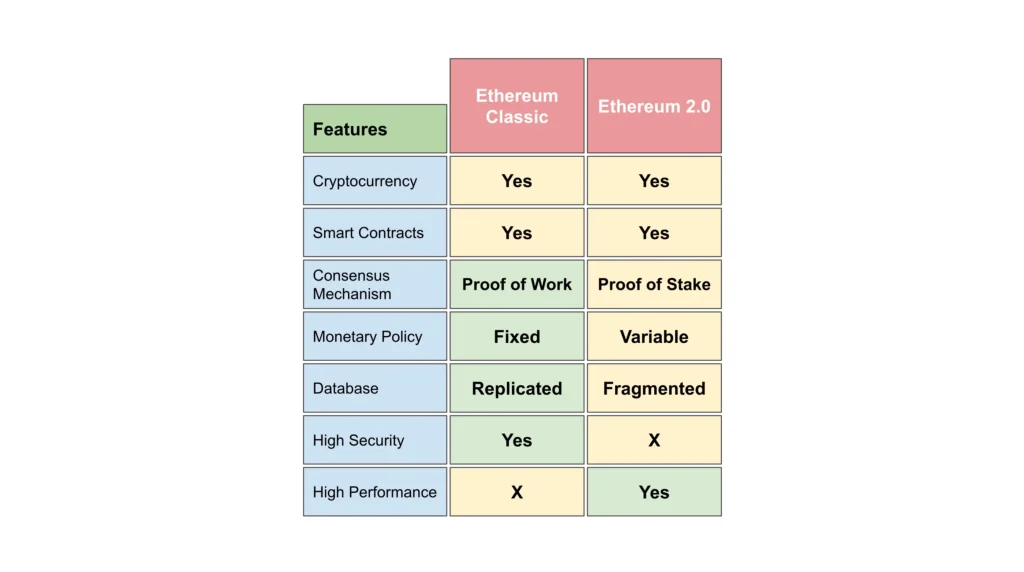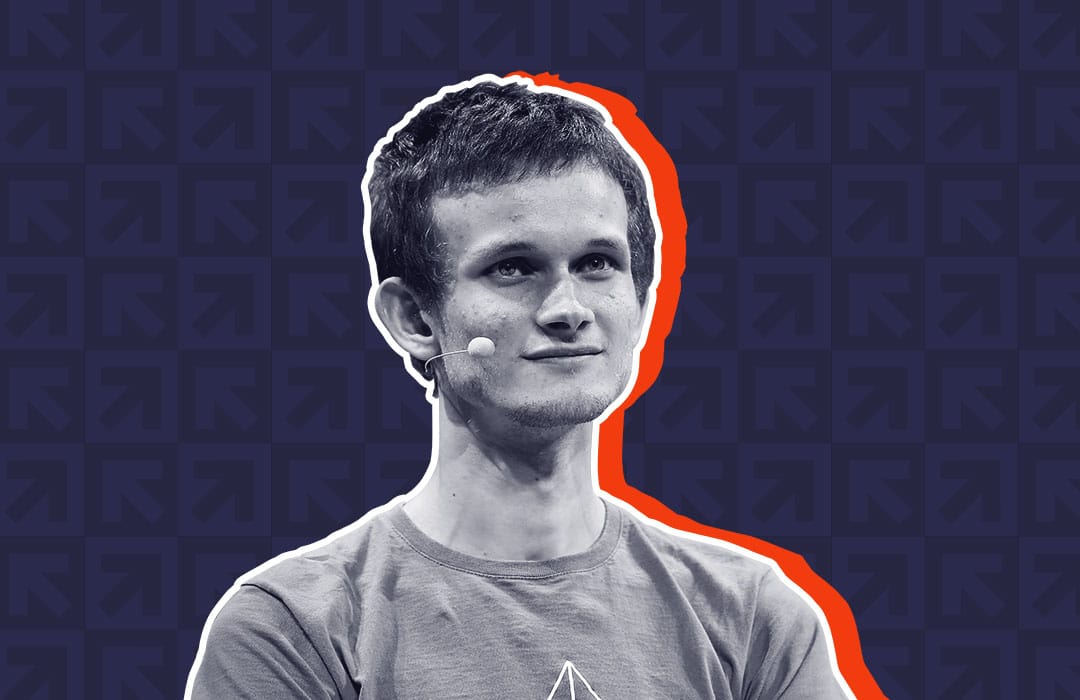Within the blockchain ecosystem, a name resonates strongly: Vitalik Buterin. This visionary developer, born in Russia in 1994, has left an indelible mark on the world of cryptocurrencies, recognized as the founding mind behind Ethereum, one of the most influential and disruptive blockchain platforms of the modern era. In addition to his contribution to Ethereum, Vitalik Buterin has played a key role in promoting open standards and educating about blockchain. His influence extends through conferences, writings, and collaborative projects aimed at bringing blockchain technology to widespread adoption. In this post, we will delve into the life and achievements of Vitalik Buterin, unraveling his impact on the world of cryptocurrencies and highlighting how his vision continues to guide the evolution of Ethereum and the blockchain revolution.
Origins of Ethereum Founder, Vitalik Buterin
Vitalik Buterin was born on January 31, 1994, in Kolomna, Russia. From an early age, he demonstrated prodigious skills in computer science and programming. The Buterin family moved to Canada when Vitalik was six, in search of new opportunities.
His academic journey began at Abelard School in Toronto, where he stood out for his keen intelligence and insatiable curiosity. Vitalik’s passion for computer science led him to the University of Waterloo, where he initially enrolled in the computer science program. However, his enthusiasm for the transformative potential of blockchain technology led him to temporarily leave university.
During this period, between 2011 and 2012, Vitalik immersed himself in the world of cryptocurrencies and blockchain. He contributed to projects like Bitcoin Magazine, where his unique understanding of technology and his ability to articulate complex ideas began to attract attention.
The seed of Ethereum was planted in Vitalik’s mind while he was still a teenager. Inspired by the limitations of Bitcoin and motivated by his vision of a more versatile blockchain platform, he began outlining the fundamental concepts that would bring Ethereum to life.
In 2013, a significant milestone was reached when Vitalik Buterin became one of the recipients of the Thiel Fellowship, a scholarship founded by Peter Thiel to support talented and entrepreneurial young individuals in leaving formal education to pursue their visionary projects.
This fellowship provided him with the freedom and resources to fully focus on the development of Ethereum. In 2014, at just 20 years old, Vitalik formally launched Ethereum, the platform that would change the face of cryptocurrencies and blockchain technology. His visionary approach and tireless dedication have left an indelible mark on the history of modern technology.

Why Did Vitalik Decide to Launch Ethereum?
In 2014, the world of cryptocurrencies and blockchain technology experienced a revolutionary milestone with the birth of Ethereum, a platform designed to go beyond the capabilities of its better-known predecessor, Bitcoin. This turning point was orchestrated by the visionary programmer and co-founder of Ethereum, Vitalik Buterin.
The genesis of Ethereum traces back to Vitalik’s unique experiences and perceptions. Despite his young age, he had already gained a deep understanding of cryptocurrencies and the inherent limitations of existing platforms. His connection to the blockchain ecosystem was forged during his involvement in projects like Bitcoin Magazine, where he began to envision the potential of blockchain technology for more than just transferring value. The drive behind the creation of Ethereum is fueled by a series of key motivations. In his writings and speeches, Vitalik highlighted his desire to build a platform that was more than just a cryptocurrency. Bitcoin, despite its innovation as a decentralized form of digital money, was limited in its ability to execute smart contracts and decentralized applications (dapps). This gap in Bitcoin’s capabilities served as a catalyst for the emergence of Ethereum.
In his formative years, Vitalik shared his ideas with a diverse group of developers, entrepreneurs, and cryptocurrency experts. The genesis of Ethereum was not an individual effort; it was a collaboration involving people from around the world with complementary skills. Vitalik’s vision resonated especially with individuals like Gavin Wood, Joseph Lubin, and other pioneers who joined the project, each contributing their unique expertise to shape the platform we know today. Ethereum was conceived as an open-source platform that would allow developers to create smart contracts and dapps without the inherent restrictions of other blockchains. Vitalik’s vision was to create a “world computer,” a global and decentralized network that automatically executes smart contracts without the need for intermediaries.
The key year was 2014 when Vitalik formally presented the concept of Ethereum in a whitepaper. This document served as the initial blueprint for the platform, outlining the technical architecture and philosophical foundations behind Ethereum. The response was overwhelming, generating massive interest and attracting a diverse community of developers, investors, and blockchain technology enthusiasts.
The decision to make Ethereum an open-source platform was fundamental to its success. This allowed the global community to contribute to the development, resulting in a more robust and resilient platform. The initial development phase involved fundraising through an Initial Coin Offering (ICO), an innovative approach that allowed investors to participate in building Ethereum from its early stages.
The official launch of Ethereum took place in July 2015, with the implementation of the first version known as “Frontier.” This event marked the beginning of a new era in blockchain technology, with Ethereum quickly establishing itself as the leading platform for smart contracts and decentralized applications (dapps).
Historical Ethereum Initial Coin Offering (ICO)
The Ethereum Initial Coin Offering (ICO), conducted in 2014, is a crucial chapter in the platform’s history and in the development of crowdfunding in the world of cryptocurrencies. This event not only marked the formal launch of Ethereum but also set a precedent for future ICOs and the decentralized funding model. Before Ethereum’s ICO, cryptocurrencies and blockchain-based projects often relied on traditional funding methods, such as business angels and venture capital. Ethereum, under the guidance of Vitalik Buterin, chose a more inclusive and accessible approach by using an ICO to raise funds and distribute its native token, Ether (ETH).
Phases of the ICO:
- Announcement and Whitepaper:
- Vitalik Buterin presented the concept of Ethereum in a whitepaper in 2013. This document detailed the vision and technical architecture of Ethereum.
- The official announcement of the ICO was made in January 2014.
- ICO Goals:
- Ethereum sought to raise funds to finance its development and construction.
- The goal was not only financial; the ICO also intended to distribute ETH in a decentralized manner and attract a committed community.
- ICO Mechanics:
- The Ethereum ICO took place in the summer of 2014.
- Participants sent bitcoins (BTC) to a specific address and, in return, received a proportional amount of Ether.
- The initial price of Ether during the ICO was set at a rate of around 2000 ETH per 1 BTC.
- Duration and Participation:
- The Ethereum ICO lasted approximately 42 days, from July 20 to September 2, 2014.
- During this period, the ICO attracted the attention of the crypto community, with participants from various parts of the world.
Record-Breaking Fundraising in the Ethereum ICO
The Ethereum ICO, conducted in 2014, left a significant mark on the cryptocurrency and blockchain technology landscape. By raising approximately 31,591 bitcoins, equivalent to around $18.4 million at that time, the ICO provided Ethereum with the financial resources needed to fund its initial development stages. Beyond mere fundraising, the ICO played a crucial role in the decentralized distribution of Ether (ETH), Ethereum’s native cryptocurrency. This approach helped prevent excessive concentration of the currency in the hands of a few, fostering broader and more diversified participation in the community.
The impact of the Ethereum ICO resonated over time, serving as a pioneering model for numerous ICOs that followed. This event marked the beginning of a new era in blockchain project funding, highlighting the effectiveness of the decentralized crowdfunding model in driving technological innovation. Additionally, the ICO propelled Ethereum into the spotlight as the leading platform for the development of smart contracts and decentralized applications (dapps). This elevated status solidified Ethereum’s position as a fundamental pillar in the evolution of blockchain technology, influencing how we conceive and build decentralized solutions today.

Continuous Evolution of Ethereum: The Crucial Role of Vitalik Buterin
Since its launch in 2015, Ethereum has not been static or immutable. On the contrary, it has undergone a series of updates aimed at improving its functionality, security, and efficiency. In this journey of evolution, the central figure who has led and orchestrated much of these transformations is Vitalik Buterin, the co-founder and mastermind behind Ethereum.
The need for updates in Ethereum arises from the growing understanding of challenges and opportunities within the blockchain space. As blockchain technology has matured, key areas requiring improvements to address issues such as scalability, security, and long-term sustainability have been identified.
The DAO Hack and the Hard Fork Decision:
In 2016, The DAO, a decentralized organization on the Ethereum network, suffered a cyberattack resulting in a significant loss of funds. The severity of the situation led the community into a debate on how to address the vulnerability and losses. In response to this dilemma, a solution was proposed: the implementation of a “hard fork” in the Ethereum blockchain. This fork involved reverting to a block before the hack and creating a new version of the blockchain that reflected this correction.
The Fork Decision and Ethereum Classic:
The community split into two camps: those in favor of the fork to reverse the hack (leading to the creation of Ethereum as we know it today) and those advocating for the immutability of the original chain, giving rise to Ethereum Classic. The Ethereum Classic blockchain remained without the correction and without the backing of the majority of the community. This resulted in two independent blockchains with distinct philosophies and directions.
Vitalik Buterin, as co-founder and central figure in Ethereum, played a crucial role during this fork period. His stance was clear: he supported the fork to correct the consequences of the hack. He considered this action necessary to preserve trust in the platform and demonstrate the community’s ability to effectively address adverse events. Vitalik’s decision to support the fork reflected his pragmatic approach to technology and commitment to the security and integrity of Ethereum. While acknowledging that the fork could have implications on decentralization and the immutability of the chain, he deemed protecting users and the long-term integrity of Ethereum a fundamental priority.
Vitalik’s Vision for Ethereum 2.0
This forking episode and the creation of Ethereum Classic left a mark on the community and set precedents for future decisions. The lessons learned and experiences accumulated contributed to the approach of Ethereum 2.0, where scalability, security, and decentralization are central considerations. Throughout this process, Vitalik Buterin became an advocate for prudence and adaptability in Ethereum’s development. His active involvement during this turbulent period helped solidify Ethereum’s position as a resilient platform and define the values that would guide future updates, including Ethereum 2.0.
Phase 0: The Beginning of a New Era
Eth2 is implemented in various phases, and Phase 0 marked the start of this exciting journey in December 2020. This phase introduced the Beacon Chain, a separate blockchain operating alongside the original Ethereum chain. The Beacon Chain is the backbone of Ethereum 2.0, laying the foundation for future scalability and security. Buterin played a crucial role in the conception and design of Ethereum 2.0, contributing his technical expertise and strategic vision. Phase 0 represented the culmination of years of research and development, and Vitalik’s active involvement in this process underscores his ongoing commitment to the improvement and growth of Ethereum.
Phase 1: Scalability and Capacity
Phase 1 of Ethereum 2.0 focuses on addressing one of the most pressing issues in the original network: scalability. With the implementation of shard chains, Ethereum 2.0 aims to significantly increase the network’s transaction processing capacity, enabling greater efficiency and performance. Vitalik Buterin’s contribution to the design of shard chains and his focus on scalability highlight his decisive role in the evolution of Ethereum. His vision of a more robust and efficient system is clearly reflected in the goals of Phase 1.
Phase 1.5: Transition to Ethereum 2.0
Phase 1.5 marks a significant milestone in the complete transition to Ethereum 2.0. With the integration of the Ethereum main chain (Eth1) into the Beacon Chain, the process of migrating to a unified and advanced system begins. Vitalik Buterin has been vocal about the importance of this transition. Phase 1.5 represents a crucial step toward the full realization of Ethereum 2.0 and, therefore, the achievement of Vitalik’s long-term vision for a more scalable, secure, and sustainable network.
Vitalik Buterin’s role is not limited to the design and conception phase of updates. His active participation in the implementation and promotion of these updates is a constant over time. The Ethereum community values transparency and direct communication, and Vitalik has been a prominent figure in this regard. Through conferences, interviews, and his ongoing contributions to Ethereum’s development channels, he has kept the community informed and engaged in the platform’s evolutionary process. The importance of the Russian figure goes beyond his technical skills. His leadership has been a catalyst for community cohesion and widespread acceptance of proposed updates. The trust placed in Vitalik as the leader of Ethereum is reflected in the gradual and successful adoption of these updates.

Ethereum Virtual Machine (EVM): Vitalik’s Fundamental Contribution to ETH
The Ethereum Virtual Machine (EVM) is one of Ethereum’s most fundamental contributions to the blockchain ecosystem. This virtual machine is essential for the execution of smart contracts and the implementation of decentralized applications (dapps) on the Ethereum network. Its introduction marked a significant milestone in the capability of executing self-executing contract programs and took blockchain functionality to an entirely new level.
The EVM in Detail:
The Ethereum Virtual Machine is a Turing-complete virtual machine, meaning it can perform any computational task expressible in terms of algorithms. It operates as an abstraction layer over the Ethereum network, allowing developers to write and deploy smart contracts in a programming language compatible with the EVM, such as Solidity. It executes these smart contracts by interpreting bytecode instructions, a set of low-level instructions representing the contract’s source code. Each node in the Ethereum network runs the EVM, ensuring that all participants reach a consensus on the execution result of the smart contract.
Ethereum’s Contribution to the EVM:
Ethereum’s contribution to the Ethereum Virtual Machine is multifaceted and revolutionary. Some highlights include:
1. Execution of Smart Contracts:
The EVM enabled decentralized execution of smart contracts on Ethereum. These contracts are self-executing programs that run exactly as programmed, without the possibility of external interference. Ethereum thus became the first blockchain to provide a native and effective platform for executing smart contracts, opening the door to a variety of decentralized applications.
2. Interoperability and Standards:
The EVM has been crucial for interoperability between different applications and contracts on Ethereum. The standardization of the EVM has facilitated the creation of ERC-20 and ERC-721 compatible tokens, which are standard protocols for fungible and non-fungible tokens, respectively. This has significantly contributed to the growth of the decentralized finance (DeFi) ecosystem and the rise of non-fungible tokens (NFTs).
3. Development of Programming Languages:
Ethereum has inspired the development of programming languages specifically for smart contracts, such as Solidity. These languages are designed to interact securely and efficiently with the EVM, providing developers with the necessary tools to build decentralized applications effectively.
Global Impact:
The Ethereum Virtual Machine has had a global impact by democratizing the development of smart contracts and decentralized applications. By providing a universally accepted platform for code execution, the EVM has paved the way for innovation, collaboration, and the creation of a diverse and dynamic blockchain ecosystem.
Conclusions
In conclusion, Vitalik Buterin has played an irreplaceable role in the history and evolution of Ethereum. From co-founding the platform to leading the most recent updates like Ethereum 2.0, his vision and technical skills have been instrumental in shaping the direction and ongoing success of the network. Vitalik’s ability to anticipate challenges and design innovative solutions, as evidenced in the transition to Proof of Stake and the implementation of shard chains, has propelled Ethereum to the forefront of the blockchain revolution. His commitment to decentralization, security, and scalability has left a lasting mark on how we conceive cryptocurrencies and decentralized applications. Beyond his technical contributions, Vitalik’s transparency and open communication have strengthened the Ethereum community. His leadership has inspired trust and collaboration, essential elements for the platform’s continuous development.
In essence, Vitalik Buterin’s figure is inseparable from the history and future of Ethereum. His bold vision and commitment to innovation have been and continue to be fundamental drivers in transforming the blockchain landscape.



